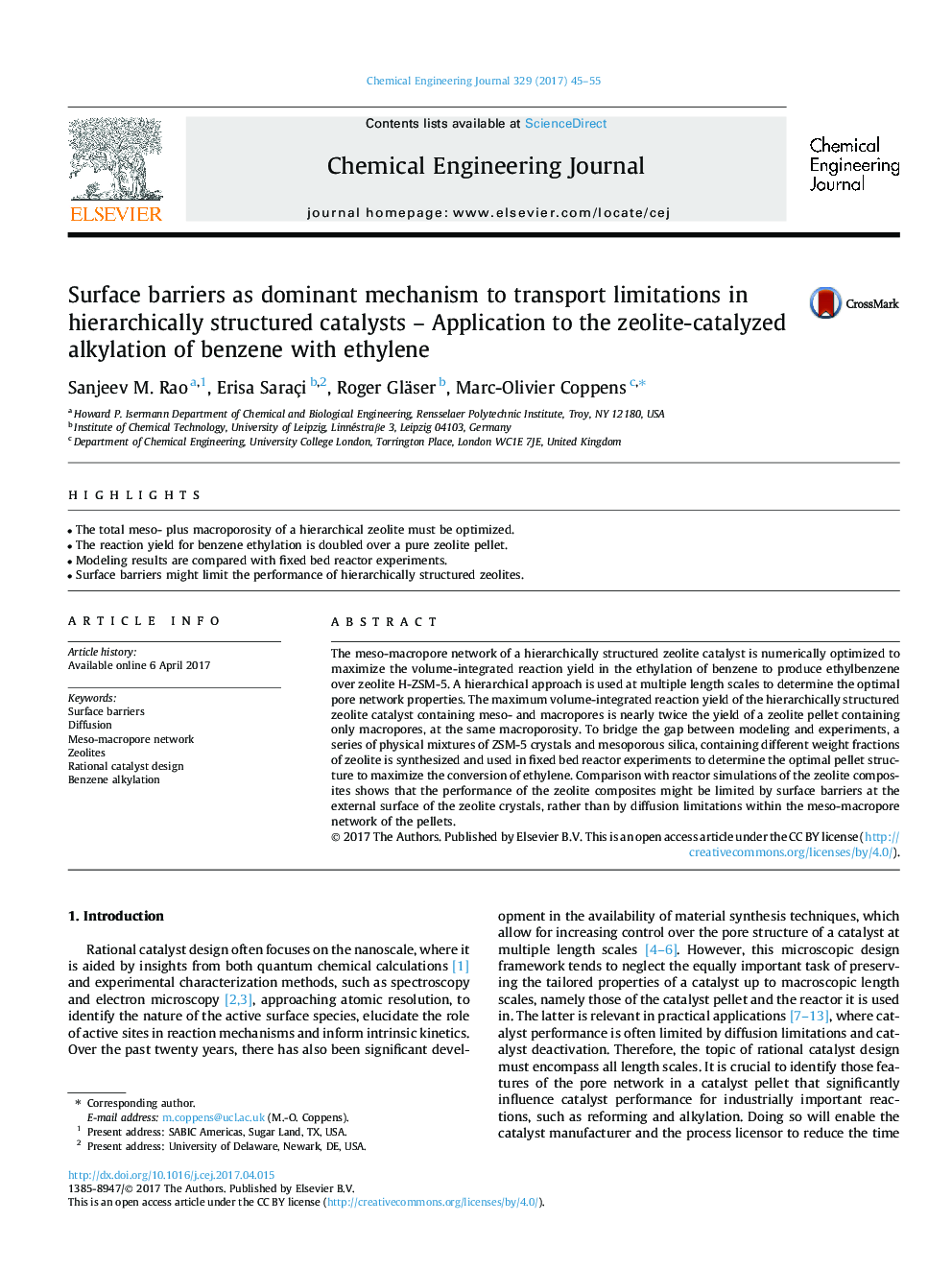| Article ID | Journal | Published Year | Pages | File Type |
|---|---|---|---|---|
| 6465384 | Chemical Engineering Journal | 2017 | 11 Pages |
â¢The total meso- plus macroporosity of a hierarchical zeolite must be optimized.â¢The reaction yield for benzene ethylation is doubled over a pure zeolite pellet.â¢Modeling results are compared with fixed bed reactor experiments.â¢Surface barriers might limit the performance of hierarchically structured zeolites.
The meso-macropore network of a hierarchically structured zeolite catalyst is numerically optimized to maximize the volume-integrated reaction yield in the ethylation of benzene to produce ethylbenzene over zeolite H-ZSM-5. A hierarchical approach is used at multiple length scales to determine the optimal pore network properties. The maximum volume-integrated reaction yield of the hierarchically structured zeolite catalyst containing meso- and macropores is nearly twice the yield of a zeolite pellet containing only macropores, at the same macroporosity. To bridge the gap between modeling and experiments, a series of physical mixtures of ZSM-5 crystals and mesoporous silica, containing different weight fractions of zeolite is synthesized and used in fixed bed reactor experiments to determine the optimal pellet structure to maximize the conversion of ethylene. Comparison with reactor simulations of the zeolite composites shows that the performance of the zeolite composites might be limited by surface barriers at the external surface of the zeolite crystals, rather than by diffusion limitations within the meso-macropore network of the pellets.
